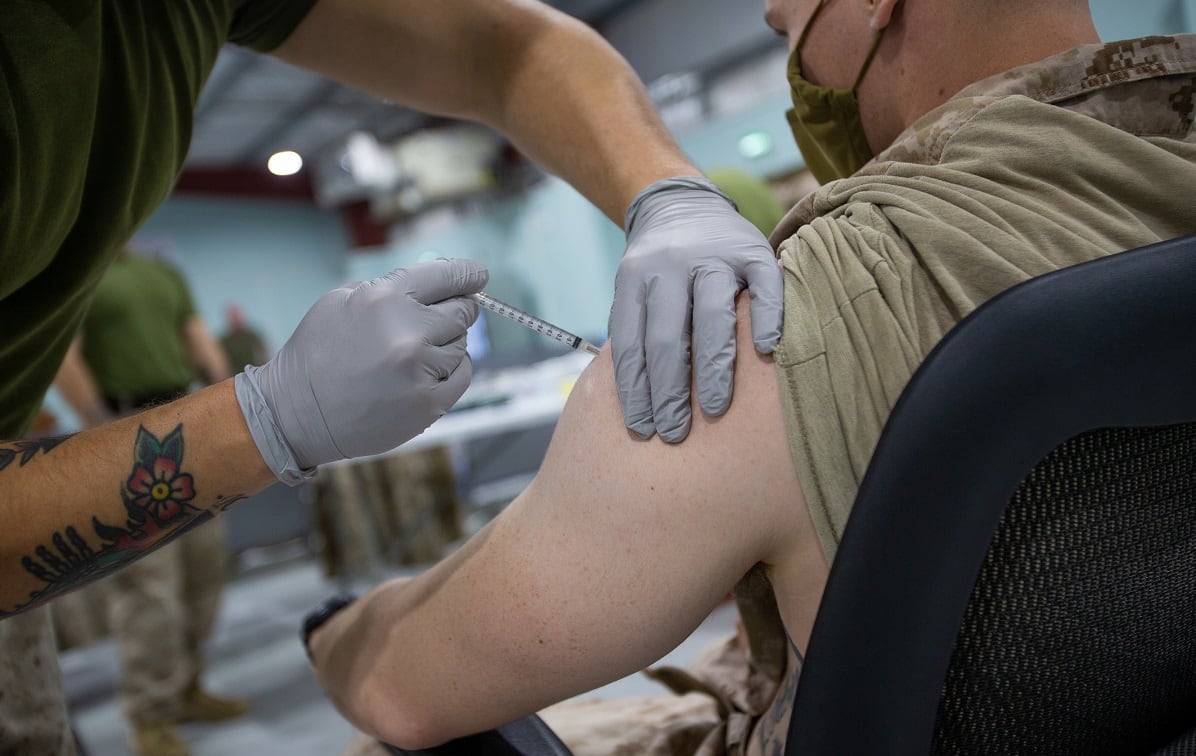House lawmakers advanced plans for their $840 billion defense policy bill early Thursday morning, which include more money to offset the costs of inflation, purchase new equipment and provide additional support for allies in Ukraine.
The bipartisan 57-1 vote came after 16 hours of debate for the massive defense authorization bill, which has passed out of Congress for more than five decades.
The House Armed Services Committee draft — along with the Senate Armed Services Committee’s released a week earlier — will serve as the baseline for the sweeping defense policy bill for the rest of the summer, as lawmakers in both chambers negotiate a final compromise version.
House committee Chairman Adam Smith, D-Wash., praised the passage as a sign of strong support across the parties for funding defense programs into the future.
RELATED
“The bill supports the largest service member pay raise in decades, expands the talent pipeline, and partners with research institutions to accelerate the development of cutting-edge technologies that will support those in uniform,” he said.
“I am particularly proud that this year’s [National Defense Authorization Act] includes a package of bold reforms that will help mitigate and prevent civilian harm in the course of military operations.”
The 4.6% pay raise for troops in 2023 would be the largest in 20 years. The measure also contains reauthorization of a host of military specialty pays and bonuses.
It also funds the purchase of eight new battle force ships (including two Virginia-class submarines and three guided-missile destroyers), full funding for the Columbia-class ballistic missile submarine and the B-21A bomber program, money for 44 Abrams tank upgrades and 102 Stryker Vehicle upgrades, and purchase of 61 F-35A, B & C Joint Strike Fighter aircraft.
The bill supports an extra $37 billion of defense spending in fiscal 2023 above what President Joe Biden requested in his federal budget proposal.
A bipartisan group of centrist Democrats and Republicans supported the boost, which includes a substantial correction for rising inflation in recent months: $3.5 billion for extra military construction costs, $2.5 billion for extra fuel costs and $1.4 billion for other inflation costs.
But the money would also go to equipment that the services wanted but did not include in their original budget proposals, including:
- $3.6 billion for an additional destroyer, an additional frigate, an additional T-AO oiler and two expeditionary medical ships;
- $2 billion for eight additional F/A-18s and other Navy/USMC aircraft;
- $400 million for munitions technology development;
- $1.2 billion for four additional Patriot units and 20 additional THAAD interceptors.
It also includes $550 million more for Ukraine security assistance, as well as costs for “advance planning to support U.S. presence on the Eastern front.”
Additionally, it reauthorizes the Small Business Administration’s Innovation Research (SBIR) and Technology Transfer (STTR) program. The Defense Department relies heavily on these small business innovation grants, but its reauthorization is uncertain amid Senate negotiations to address concerns from Sen. Rand Paul, R-Ky.
A significant portion of the daylong debate was dedicated to social issues offered by Republicans but largely rejected by Democrats.
Provisions on banning critical race theory at military schools, blocking vaccine mandates for coronavirus, shutting down research into extremism in the military and military monitoring of illegal immigration were all defeated by the majority party.
RELATED

Undoing planned retirements
The committee also adopted by voice vote an amendment offered by Rep. Jim Cooper, D-Tenn., the head of the Strategic Forces panel, to provide $45 million in funding for the sea-launched cruise missile nuclear development program (SLCM-N).
Cooper’s amendment puts the bill at odds with the Joe Biden administration, committee Chairman Adam Smith, and Democrats on the House Defense Appropriations Committee who seek to cancel the program. Appropriators advanced defense funding legislation that would defund SLCM-N in a separate vote on Wednesday.
However, the House Armed Services Committee voted down a separate amendment from Rep. Blake Moore, R-Utah, that would have withheld 25% of funds from the secretary of defense for operation and maintenance until the Air Force conducts a test flight of the Minuteman III ICBM.
The Biden administration canceled this year’s Minuteman III test flight to avoid escalating tensions with Russia after Moscow put its nuclear posture on high alert amid its invasion of Ukraine.
Similarly, armed services committee lawmakers included language in their draft preventing the Navy from decommissioning its Littoral Combat Ships. Navy leadership had recommended the decommissioning of the ships in their budget request released earlier this spring.
At the time, officials said they had more urgent spending needs. The retirement would free up money for other items more applicable to a near-term high-end fight, such as missiles. However, they also noted that if more money was found, they could find more missions for the ships.
Smith, the committee’s chairman, said he intends to continue the decommissioning fight on the House floor later this summer.
Additionally, the committee opted to allow the Air Force to proceed with its likely plan not to hold a competition for the manufacturer of the next KC-Y bridge refueling tanker. After a contentious debate, the committee adopted an amendment from Rep. Donald Norcorss, D-N.J., that would allow plans for a no-bid contract to proceed.
Next steps
The full House is expected to take up the authorization bill in July. There, the floor debate is likely to repeat some of the same issues as were covered in the armed services panel’s debate, including the top line spending target.
Because the massive measure is also one of the few reliable pieces of legislation to pass through Congress each year, it also serves as a potential target for other federal budget policies. In the past, topics such as expanding paid leave for federal employees have been included in the legislation.
The Senate is also expected to take up its armed services committee’s draft next month. Lawmakers there have backed a $45 billion plus-up to Biden’s budget target, setting up a spending showdown when the two chambers meet for authorization bill negotiations.
Whether that work can be completed by the start of the new fiscal year on Oct. 1 remains unclear. Lawmakers have met that deadline only once in the last 13 years, but remain optimistic that they can finish the bill before the November midterm elections.
Leo covers Congress, Veterans Affairs and the White House for Military Times. He has covered Washington, D.C. since 2004, focusing on military personnel and veterans policies. His work has earned numerous honors, including a 2009 Polk award, a 2010 National Headliner Award, the IAVA Leadership in Journalism award and the VFW News Media award.
Bryant Harris is the Congress reporter for Defense News. He has covered U.S. foreign policy, national security, international affairs and politics in Washington since 2014. He has also written for Foreign Policy, Al-Monitor, Al Jazeera English and IPS News.



